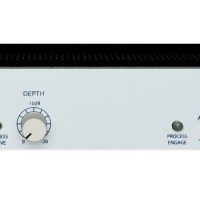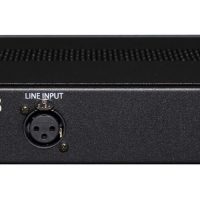- Home
- /
- Producten
- /
- Rupert Neve Designs 5045 Primary Source Enhancer | LPA special | Price only for current stock
Rupert Neve Designs 5045 Primary Source Enhancer | LPA special | Price only for current stock
Tot + 20 db extra signaal voor feedback on stage.
primary source enhancer
Vragen? Betere prijs gezien?
Bel 0512 - 340457 of neem contact op!
Product omschrijving

The world’s most natural feedback reduction.
The 5045 Primary Source Enhancer is exceptionally useful at reducing feedback without negatively impacting the sonic integrity of the source signal, effectively increasing the level a microphone can be raised before feedback occurs in a live sound environment by up to 20dB. With controls that are very simply laid out and generally require minimal adjustment, the 5045 is an invaluable tool for churches, stadiums, performance halls, or any venue where feedback is problematic.
“Without the Primary Source Enhancer, I wouldn’t be able to do my job.”
— ANDY MEYER, FOH / JUSTIN TIMBERLAKE, MADONNA
100% Analog Design
The 5045 shares some traits with conventional “noise gates”, but operates on a different principle. One common aspect is that both reduce the gain during the absence of signal – or more specifically, both begin to attenuate when the level of a signal falls below a certain user-defined threshold. The 5045 senses when someone is speaking or singing into the mic and allows the signal to pass through, and senses when the person has stopped talking or singing and reduces the gain appropriately, thus reducing the system’s tendency to feed back.
Importantly, the 5045 does not utilize filtering or digital processing to achieve its significant benefits. Built around Rupert Neve Designs’ custom input and output transformers, its all-analog circuitry provides superb control and sonic performance without compromising the integrity of the source material. This makes the 5045 the most intuitive, natural-sounding and effective method of feedback reduction available on the market.
Simple, Intuitive Controls
With a minimal control set, the 5045’s ease of use makes it ideal even for circumstances where a full-time or experienced engineer is not readily available, and allows for rapid adjustments on-the-fly even during performances.
The 5045 is an absolutely indispensable addition to any setup where feedback or reverberation are problematic, and is used every night on the biggest stages all across the world.

POWER STATUS LED
LED indicates power status.
PROCESS ENGAGE
Illuminated push-button that engages the Primary Source Enhancer’s effect.
TIME CONSTANT
Designed to help prevent choppiness in some situations and stop feedback in other situations, by setting how quickly the attenuation occurs in the quiet sections between words or sentences. “A” is the fastest and “F” is the slowest. “A” will quickly soften the level which can be advantageous when the singer is consistent and feedback howl is challenging. “F” is the safest in terms of slowly fading down, but might be a bit slow fading up again, and might be a bit slow for controlling some pesky feedback situations. “C” and “D” are moderate settings that should fit many situations and generally fade down slow enough so that the ends of words are not affected, yet fast enough to control feedback. Choose the most appropriate time constant that doesn’t soften the beginnings and endings of phrases, yet still diminishes the feedback and “boominess” of the signal.
RMS / PEAK
Illuminated push-button that selects between RMS and Peak detection modes. When illuminated, the 5045 is in PEAK mode – useful for detecting faster transient peaks, and for creative dynamic envelope shaping. When not illuminated, the 5045 is in RMS mode, which utilizes a slower, more averaged response characteristic in the sidechain.
THRESHOLD
Sets the dBu level at which the Primary Source Enhancer engages.
PROCESS ACTIVE
This LED indicates when the 5045 is actively affecting signal – a.k.a. when the input signal has overcome the enhancement threshold. Since this LED should generally be illuminated when the desired source is present (a vocalist singing, for example) it is extremely helpful in setting up the 5045 for use.
DEPTH
The “DEPTH” knob sets how much attenuation is applied after the signal falls below where the “THRESHOLD” is set. “0” implies zero attenuation and the 5045 won’t be doing anything. “-10 dB” is moderate attenuation and reasonably safe from accidentally chopping off a word or part of a word. “-20 dB” attenuates deeper but might be a bit choppy. Setting the “DEPTH” control so that it does not chop off bits of quietly spoken words while fighting a difficult feedback problem is the goal, especially with singers that sing quietly one moment and loudly the next while demanding loud monitors.

 Product is toegevoegd aan uw winkelwagen
Product is toegevoegd aan uw winkelwagen




